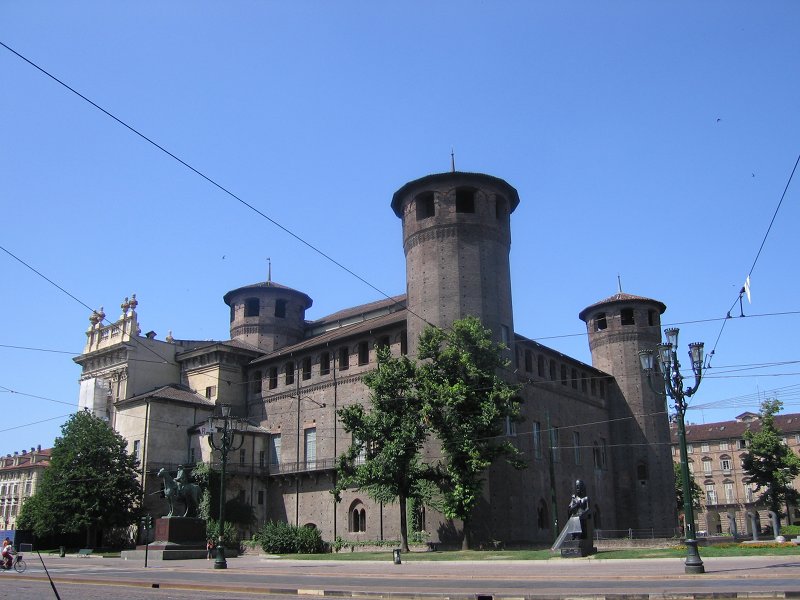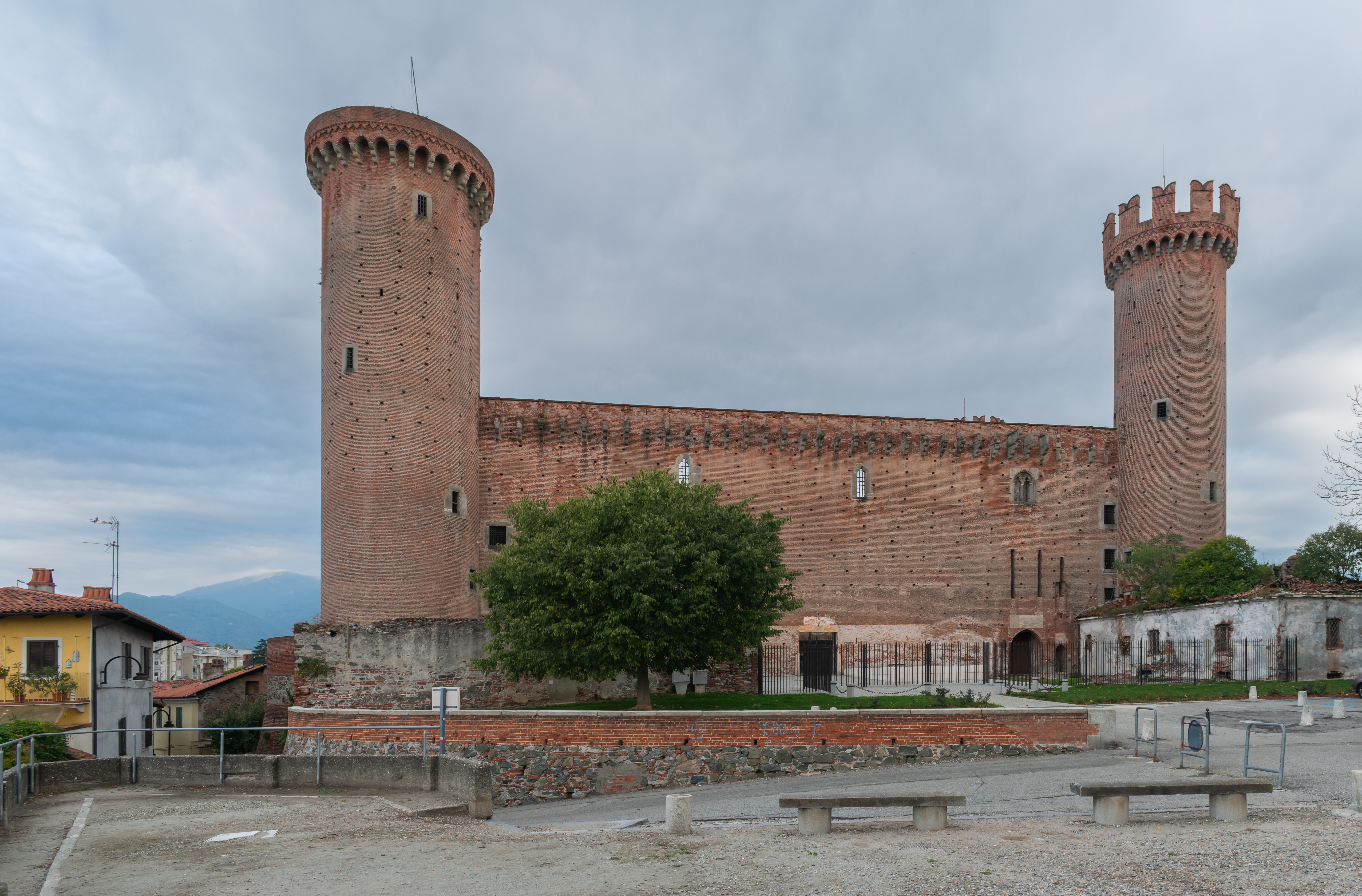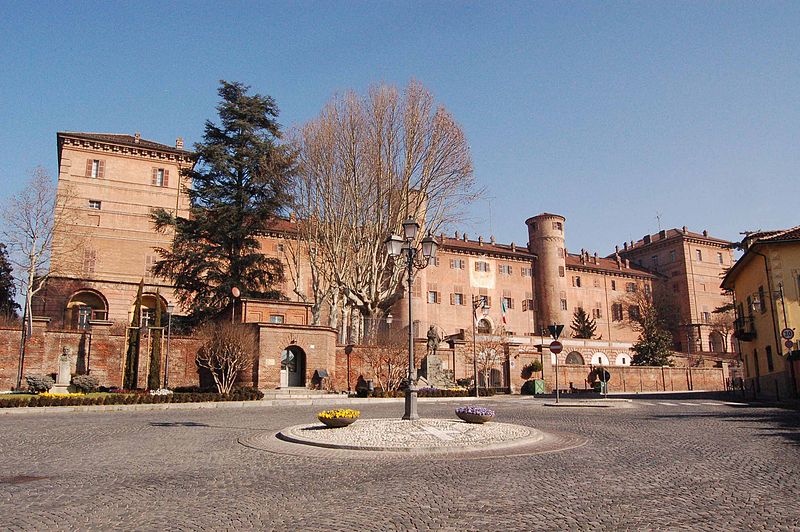Introduction. This is part #10, Summary (7), of my theory that the radiocarbon dating laboratories were duped by a computer hacker. My next post in this series will be part #10, Summary (8). See the previous parts #10(1), #10(2), #10(3), #10(4), #10(5) and #10(6). Other previous posts in this series were parts #1, #2, #3, #4, #5, #6, #7, #8 and #9, which posts this part #10 will summarise. It is my emphasis below unless otherwise indicated. See the update of this post in my "The 1260-1390 radiocarbon date of the Turin Shroud was the result of a computer hacking #6".
[Index [#2] [#3][#4][#5][#6][#7][#8][#9][#10(1)][#10(2)][#10(3)][#10(4)][#10(5)][#10(6)][#10(8)][#10(9)][#10(10)].]
[Above: Arizona radiocarbon dating laboratory staff and Rochester radiocarbon dating laboratory's Prof. Harry Gove (second from right) around the AMS control console computer terminal[2], just before or after it had, on 6 May 1988 displayed the alleged hacker's bogus radiocarbon age of the Shroud, "640 years"[3], which was then calibrated to "1350 AD"[4]. The alleged hacker, Timothy W. Linick, is the one in a black shirt standing most prominently in the foreground[5].]
7. EVIDENCE THAT TIMOTHY W. LINICK WAS THE HACKER [#7] In #10(6) we saw that:
• Linick was an extreme anti-authenticist who would not accept that the Shroud was authentic, even if its carbon-date was 2000 years ago:
"Timothy Linick, a University of Arizona research scientist, said: `If we show the material to be medieval that would definitely mean that it is not authentic. If we date it back 2000 years, of course, that still leaves room for argument. It would be the right age - but is it the real thing?'"[6].
By contrast, anti-authenticists like Oxford's Prof. Edward Hall and Prof. Harry Gove, would have accepted that the Shroud was authentic if its carbon-date was first century[7].
• Linick was aware of McCrone's prediction that the Shroud's carbon date would be "about 1355." Linick's words above, coupled with his extreme anti-authenticism, indicate that he was aware of the prediction of the late extreme anti-authenticist Walter McCrone (1916-2002) who wrote in 1980 of a future "carbon-dating test" that, "A date placing the linen cloth in the first century, though not conclusive in proving the cloth to be the Shroud of Christ... a first century cloth could have been found and used by a 14th century artist to paint the image."[8]. This was in the context of McCrone's claim that "the image [on the Shroud] was painted on the cloth shortly before the first exhibition, or about 1355"[9]. That McCrone regarded what he wrote in 1980 as a prediction is evident from: 1) he later claimed it was a prediction: "I could predict with complete confidence what the result of the radiocarbon dating of the linen cloth would be ..." followed by an excerpt from the above 1980 quote[10]; and 2) in a 1980 letter to David Sox, McCrone wrote: "The carbon date will be helpful here; I predict the range of dates found will include the 1350's but it could be earlier"[11].
• Linick was the leaker of Arizona's "1350" first date of the Shroud. The above quote of Linick by Sox is proof beyond reasonable doubt that Linick was the leaker, who told Sox that Arizona's first calibrated radiocarbon date of the Shroud was "1350"[12]. Linick was not a laboratory leader, but an ordinary `back room' Arizona laboratory scientist, who would have been unknown outside of radiocarbon dating circles. So Sox, who lived in England, would not even know that Linick existed, let alone quote him, unless Linick had contacted Sox, in breach of his signed undertaking "not to communicate the results to anyone ... until that time when results are generally available to the public"[13]. Gove had, by a process of elimination, concluded that the leaker of Arizona's first "1350" date had to have been "someone who was present at Arizona during the first measurement," as Linick was[14].
• Linick was found dead of suspected suicide on 4 June 1989 Linick was found dead in Tucson, Arizona[15] on 4 June 1989[16], at the age of 42[17].
[Right: Photograph of Linick and report that "He died at the age of forty-two on 4 June 1989, in very unclear circumstances, shortly after the campaign of the Italian press reporting our [Bonnet-Eymard's] accusations"[18].This is consistent with my theory that the KGB executed confessed KGB hacker Karl Koch between 23 and 30 May 1989, and Linick the day after[19] the German police had publicly released the identity of a burnt body as Koch's on 3 June 1989[20] [see 17May15], to prevent them revealing that the radiocarbon dating of the Shroud to 1325 ±65[21] was the result of a KGB-sponsored computer hacking by Linick, aided by Koch.]
Linick's obituary in Arizona laboratory's journal Radiocarbon stated that his death was "untimely"[22], and the lack of details (e.g. "after an illness," "as a result of a road accident," etc) suggests that Linick's death was sudden, unexpected and embarrassing (as a suicide would be). Ian Wilson recorded Linick's death in his chronology of the Shroud for 4 June 1989, that it was "in unclear circumstances"[23]. Vatican
[Above: Extract from Ian Wilson's "Chronology of the Shroud," under "1989," on page 311 of his, "Blood and the Shroud" (1998), noting that Linick's death was "in unclear circumstances" and that he was "one of the authors of the Nature report on the Shroud radiocarbon dating."]
Insider reported that Linick's death was "suicide in mysterious circumstances"[24]. Those who correctly concluded that since the Shroud is authentic, there had to have been fraud in its radiocarbon dating, such as Roman Catholic scholar Br. Bruno Bonnet-Eymard[25], suspected that Linick was murdered to cover up his part in the radiocarbon dating fraud[26]. Linick's death occurred shortly after a campaign in the Italian press reporting Bonnet-Eymard's accusations of fraud in the radiocarbon dating [27]. No other signatory to the 1989 Nature paper[28] appears to have met an untimely death.
Yet, despite my trying (e.g. emailing Arizona news media, police departments, etc), I have been unable to find any further information on Linick's death. Arizona is a "closed record" state, which means that death records are not normally available to the public[29]. The US Library of Congress could only find for me two newspaper items about Linick's death, a funeral notice in the Arizona Daily Star of June 6 and a death notice in the Los Angeles Times of June 9 (see below). That Linick's death was apparently not reported in at  least the local Tucson or Arizona state newspapers, suggests that there was something mysterious about Linick's death. The sudden
least the local Tucson or Arizona state newspapers, suggests that there was something mysterious about Linick's death. The sudden
[Left: Timothy W. Linick's funeral and death notices sent to me by the Library of Congress. In the words of the librarian: "I am attaching two death notices, one from the Arizona Daily Star (June 6), and one from the Los Angeles Times (June 9)" and "I have not been able to find any additional information on the cause of Linick's death"[30]].
"untimely" death of a 42 year-old local scientist (especially one who had only a year before been involved in carbon-dating the Shroud of Turin) is sufficiently unusual to have been newsworthy, so there may have been a high-level suppression of news about Linick's death, due to its circumstances which may have made US security agencies suspect the KGB's involvement. Another possibility is that Linick's `suicide' was by a method that tends not to be reported to prevent `copy-cat' suicides, such as suicide by train. Clearly the KGB could have executed Linick on the pretext of meeting him and then arranging for him to be run over by a train, in a simulated suicide.
• Linick's role at Arizona laboratory included the AMS carbon-14 measurement procedures. Linick was mentioned in footnote 9 of the 1989 Nature paper[31] as the lead author of a 1986 Radiocarbon paper which gave the "specific measurement procedures" for Arizona laboratory[32]. In that paper Linick described in
[Above (enlarge): Excerpts from page 613 and footnotes on page 615 of the 1989 Nature paper, which states that Linick was the lead author of a 1986 Radiocarbon paper which described the radiocarbon measurement procedures for Arizona.]
minute technical detail how the AMS system at Arizona measured the carbon-14 content of samples[33]. It may be significant that Linick is the only one of the three lead authors who originally described the AMS carbon-14 measurement procedures at each of the three laboratories, who was also a signatory to the 1989 Nature paper.
• So Linick would have had access to Arizona's AMS computer, would understand what its carbon 14 measurement program did, and may even have written that program! Also, the previously mentioned standard order of samples explains how Linick could write a program, not only for Arizona, but also for the other two laboratories, Zurich and Oxford, and the program would know which sample was of the Shroud. Each laboratory knew which, of their supposedly `blind' samples, was of the Shroud, by its distinctive weave. As we saw, a unique identifying code for the Shroud and control samples was imposed upon the laboratories by the coordinator of the dating, Prof. Tite of the British Museum[34]. It would therefore not be difficult for a competent programmer, as the "extremely mathematically gifted"[35] Linick presumably was, to write a program which could detect that a sample was of the Shroud and then substitute the date of that Shroud sample with random dates within limits which, when they were calibrated, totalled and averaged, would make the flax of the Shroud appear to have been harvested a plausible period of time before McCrone's prediction of "about 1355" above.
The sole exception may have been Arizona's very first run which was the `too good to be true', when calibrated, "1350 AD" date, which looks like a `hard-wired' straight substitution of "640" uncalibrated, for the actual Shroud date, by Linick's alleged program. The hacker, allegedly Linick, presumably wanted the very first run to yield a calibrated "1350" date for its psychological and media leak value. He would have needed to create a climate of expectation that the Shroud was medieval, so his program's combined average 1325 ±65 calibrated date of the Shroud across the three laboratories would be unquestioned. Also, the hacker, allegedly Linick, may have needed some actual Shroud and control sample data to test his program against to ensure there were no `bugs' in it.
• Linick had sufficient time to prepare and carry out the hacking. On 10 October 1987 the Archbishop of Turin advised the seven laboratories which had originally been agreed would carbon-date the Shroud, using two different methods, that their number had been reduced to three laboratories using only one method, AMS: Arizona, Oxford and Zurich[36]. So after that the hacker (allegedly Linick) would have realised that it was feasible for him to write a program to be installed on the AMS computers at the three laboratories (which were effectively clones of each other[37]), to replace the Shroud's carbon 14 dates coming from their AMS systems, with computer-generated dates which would ensure the Shroud appeared to date from a plausible time before the Shroud's debut in undisputed history at Lirey, France, about 1355[38]. On 21 April 1988 the sample was cut from the Shroud and sub-samples in turn were cut from it and distributed to leaders of the three laboratories[39]. The first actual dating of the Shroud was over six weeks after that when Arizona carried out its first run on 6 May 1988[40]. Zurich was next with its first dating on or about 26 May[41], nearly three weeks after Arizona's. Eight weeks after Zurich, on 21 July, Oxford completed its dating of the Shroud[42]. So Linick, the alleged hacker, had plenty of time, after he had proved his program worked at Arizona, to have it installed on Zurich and Oxford's AMS computers. Although because Linick may have been unsure when each laboratory would date the Shroud, he could have written his alleged program and had it installed on all three laboratories' AMS computers even before, or shortly after, the sample was cut from the Shroud. However, since the laboratories were in contact with each other during the tests[43], it is likely that they had prearranged the order and approximate timeframe in which each laboratory would conduct its dating, and if so Linick would have known that order and timeframe.
Continued in part #10, Summary (8).
Notes
1. This post is copyright. No one may copy from this post or any of my posts on this my The Shroud of Turin blog without them first asking and receiving my written permission. Except that I grant permission, without having to ask me, for anyone to copy the title and one paragraph only (including one associated graphic) of any of my posts, provided that if they repost it on the Internet a link to my post from which it came is included. See my post of May 8, 2014. [return]
2. Gove, H.E., 1996, "Relic, Icon or Hoax?: Carbon Dating the Turin Shroud," Institute of Physics Publishing: Bristol UK, p.176H. [return]
3. Gove, 1996, p.264. [return]
4. Ibid. [return]
5. Jull, A.J.T. & Suess, H.E. , 1989, "Timothy W. Linick," Radiocarbon, Vol 31, No 2. [return]
6. Sox, H.D., 1988, "The Shroud Unmasked: Uncovering the Greatest Forgery of All Time," Lamp Press: Basingstoke UK, p.147. [return]
7. Gove, 1996, pp.184-185. [return]
8. McCrone, W.C., 1999, "Judgment Day for the Shroud of Turin," Prometheus Books: Amherst NY, pp.138, 141. [return]
9. Ibid. [return]
10. McCrone, 1999, p.245. [return]
11. McCrone, 1999, p.178. [return]
12. Gove, 1996, p.264. [return]
13. Gove, 1996, p.262. [return]
14. Gove, 1996, p.279. [return]
15. Suess, H.E. & Linick, T.W., 1990, "The 14C Record in Bristlecone Pine Wood of the past 8000 Years Based on the Dendrochronology of the Late C. W. Ferguson," Philosophical Transactions of the Royal Society of London. Series A, Mathematical and Physical Sciences, Vol. 330, April 24, pp.403-412. [return]
16. Jull & Suess, 1989. [return]
17. de Nantes, G. & Bonnet-Eymard, B., 2014, "The Holy Shroud of Turin: II. The conclusion of a new trial," The Catholic Counter-Reformation in the 21st Century, 27 March. [return]
18. Bonnet-Eymard, B., 2000, "The Holy Shroud is as Old as the Risen Jesus, IV. Caution! Danger!, The Catholic Counter-Reformation in the XXth Century, No 330, Online edition, May. [return]
19. Jull & Suess, 1989. [return]
20. "WikiFreaks, Pt. 4 `The Nerds Who Played With Fire'," The Psychedelic Dungeon, 15 September 2010h; and Clough & Mungo, 1992, p.163. [return]
21. The cited radiocarbon dating range "1260-1390" of the Shroud is equivalent to "the year AD 1325, give or take sixty-five years either way." (Wilson, I., 1998, "The Blood and the Shroud: New Evidence that the World's Most Sacred Relic is Real," Simon & Schuster: New York NY, p.7). [return]
22. Jull & Suess, 1989. [return]
23. Wilson, 1998, p.311. [return]
24. Galeazzi, G., 2013. "Never solved: The enigma that still divides the Church: The Shroud," Vatican Insider, 1 April. Translated from Italian by Google. See English translation, "Unsolved Enigma that Still Divides the Church: The Shroud." [return]
25. Petrosillo, O. & Marinelli, E., 1996, "The Enigma of the Shroud: A Challenge to Science," Scerri, L.J., transl., Publishers Enterprises Group: Malta, pp.128-129. [return]
26. "Examination of the carbon-14 dating of the Shroud," Wikipedia, January 4, 2014. Translated from Italian by Google. [return]
27. Bonnet-Eymard, 2000. [return]
28. "9. Linick, T. W., Jull, A. J. T., Toolin, L. J. & Donahue, D. J. Radiocarbon 28, 522-533 (1986).[return]
29. "Who Can Obtain a Death Certificate,"Arizona Department of Health Services: Office of Vital Records, April 15, 2014. [return]
30. Email reply from the Library of Congress, received on 2 May 2014. [return]
31. Damon, P.E., et al., 1989, "Radiocarbon Dating of the Shroud of Turin," Nature, Vol. 337, 16th February, pp.611-615, p. 613. [return]
32. Ibid. [return]
33. Linick, T.W., et al. , 1986, "Operation of the NSF-Arizona accelerator facility for radioisotope analysis and results from selected collaborative research projects," Radiocarbon, Vol. 28, No. 2a, pp.522-533. [return]
34. Sox, 1988, pp.138-139. [return]
35. Jull & Suess, 1989. [return]
36. Gove, 1996, pp.213-214. [return]
37. Wilson, I., 1991, "Holy Faces, Secret Places: The Quest for Jesus' True Likeness," Doubleday: London, p.178. [return]
38. Wilson, I., 2010, "The Shroud: The 2000-Year-Old Mystery Solved," Bantam Press: London, p.222. [return]
39. Gove, 1996, pp.260-261. [return]
40. Gove, 1996, pp.263-264. [return]
41. Guerrera, V., 2000, "The Shroud of Turin: A Case for Authenticity," TAN: Rockford IL, p.131. [return]
42. McDonnell, D.J., 2003, "The Great Holy Shroud Dating Fraud of 1988," 4 November. [return]
43. Kersten, H. & Gruber, E.R., 1994, "The Jesus Conspiracy: The Turin Shroud and the Truth About the Resurrection," Element Books: Shaftesbury UK, Reprinted, 1995, p.69; Wilson, I., 1988, "Ian Wilson Writes," British Society for the Turin Shroud Newsletter, No. 19, April, p.4. [return]
Posted 31 March 2015. Updated 16 March 2025.










